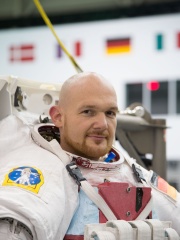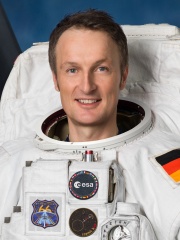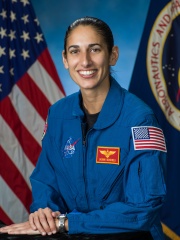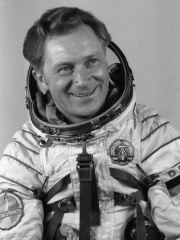
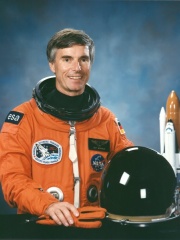
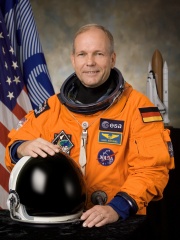
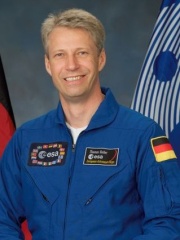
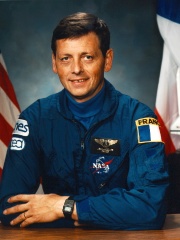
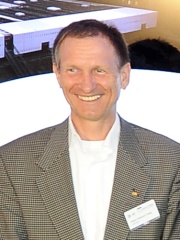
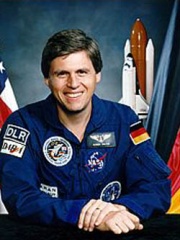
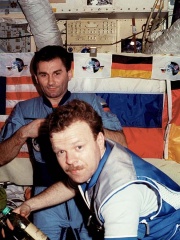
The Most Famous
ASTRONAUTS from Germany
This page contains a list of the greatest German Astronauts. The pantheon dataset contains 556 Astronauts, 13 of which were born in Germany. This makes Germany the birth place of the 5th most number of Astronauts behind Ukraine, and China.
Top 10
The following people are considered by Pantheon to be the top 10 most legendary German Astronauts of all time. This list of famous German Astronauts is sorted by HPI (Historical Popularity Index), a metric that aggregates information on a biography's online popularity. Visit the rankings page to view the entire list of German Astronauts.

1. Sigmund Jähn (1937 - 2019)
With an HPI of 68.36, Sigmund Jähn is the most famous German Astronaut. His biography has been translated into 45 different languages on wikipedia.
Sigmund Werner Paul Jähn (German: [jɛ:n]; 13 February 1937 – 21 September 2019) was a German pilot, cosmonaut, and Generalmajor (equivalent to a Brigadier General in Western armies) in the National People's Army of the GDR. He was the first German to fly into space as part of the Soviet Union's Interkosmos program in 1978. He was the very last living East German holder of the title Hero of the German Democratic Republic when he died in 2019.

2. Ulf Merbold (b. 1941)
With an HPI of 59.86, Ulf Merbold is the 2nd most famous German Astronaut. His biography has been translated into 29 different languages.
Ulf Dietrich Merbold (German: [ʊlf ˈdiːtrɪç ˈmɛrbɔlt]; born 20 June 1941) is a German physicist and astronaut who flew to space three times, becoming the first West German citizen in space and the first non-American to fly on a NASA spacecraft. Merbold flew on two Space Shuttle missions and on a Russian mission to the space station Mir, spending a total of 49 days in space. Merbold's father was imprisoned in NKVD special camp Nr. 2 by the Red Army in 1945 and died there in 1948, and Merbold was brought up in the town of Greiz in East Germany by his mother and grandparents. As he was not allowed to attend university in East Germany, he left for West Berlin in 1960, planning to study physics there. After the Berlin Wall was built in 1961, he moved to Stuttgart, West Germany. In 1968, he graduated from the University of Stuttgart with a diploma in physics, and in 1976 he gained a doctorate with a dissertation about the effect of radiation on iron. He then joined the staff at the Max Planck Institute for Metals Research. In 1977, Merbold successfully applied to the European Space Agency (ESA) to become one of their first astronauts. He started astronaut training with NASA in 1978. In 1983, Merbold flew to space for the first time as a payload specialist or science astronaut on the first Spacelab mission, STS-9, aboard the Space Shuttle Columbia. He performed experiments in materials science and on the effects of microgravity on humans. In 1989, Merbold was selected as payload specialist for the International Microgravity Laboratory-1 (IML-1) Spacelab mission STS-42, which launched in January 1992 on the Space Shuttle Discovery. Again, he mainly performed experiments in life sciences and materials science in microgravity. After ESA decided to cooperate with Russia, Merbold was chosen as one of the astronauts for the joint ESA–Russian Euromir missions and received training at the Russian Yuri Gagarin Cosmonaut Training Center. He flew to space for the third and last time in October 1994, spending a month working on experiments on the Mir space station. Between his space flights, Merbold provided ground-based support for other ESA missions. For the German Spacelab mission Spacelab D-1, he served as backup astronaut and as crew interface coordinator. For the second German Spacelab mission D-2 in 1993, Merbold served as science coordinator. Merbold's responsibilities for ESA included work at the European Space Research and Technology Centre on the Columbus program and service as head of the German Aerospace Center's astronaut office. He continued working for ESA until his retirement in 2004.

3. Hans Schlegel (b. 1951)
With an HPI of 54.18, Hans Schlegel is the 3rd most famous German Astronaut. His biography has been translated into 24 different languages.
Hans Wilhelm Schlegel (Überlingen, 3 August 1951) is a German physicist, a former ESA astronaut, and a veteran of two NASA Space Shuttle missions.

4. Thomas Reiter (b. 1958)
With an HPI of 54.18, Thomas Reiter is the 4th most famous German Astronaut. His biography has been translated into 30 different languages.
Thomas Arthur Reiter (born 23 May 1958 in Frankfurt, West Germany) is a retired European astronaut and is a Brigadier General in the German Air Force currently working as ESA Interagency Coordinator and Advisor to the Director General at the European Space Agency (ESA). He was one of the top 25 astronauts in terms of total time in space. With his wife and two sons he lives near Oldenburg in Lower Saxony.
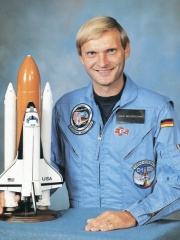
5. Ernst Messerschmid (b. 1945)
With an HPI of 53.57, Ernst Messerschmid is the 5th most famous German Astronaut. His biography has been translated into 17 different languages.
Ernst Willi Messerschmid (born 21 May 1945) is a German physicist and former astronaut.

6. Jean-Jacques Favier (1949 - 2023)
With an HPI of 52.65, Jean-Jacques Favier is the 6th most famous German Astronaut. His biography has been translated into 16 different languages.
Jean-Jacques Favier (French pronunciation: [ʒɑ̃ ʒak favje]; 13 April 1949 – 19 March 2023) was a German-born French engineer and a CNES astronaut who flew aboard the STS-78 NASA Space Shuttle mission in 1996. Favier was due to fly aboard the doomed Columbia mission in 2003 (STS-107), but later opted out of the mission. Jean-Jacques Favier was deputy director for space technology and deputy director for advanced concepts and strategy at CNES, director of the Solidification Laboratory at the French Atomic Energy Commission and research program director at the International Space University.

7. Klaus-Dietrich Flade (b. 1952)
With an HPI of 52.50, Klaus-Dietrich Flade is the 7th most famous German Astronaut. His biography has been translated into 18 different languages.
Klaus-Dietrich Flade (born 23 August 1952) is a German pilot and former German Aerospace Center astronaut who visited the Mir space station in 1992 aboard the Soyuz TM-14 mission, returning to Earth a week later aboard Soyuz TM-13.

8. Ulrich Walter (b. 1954)
With an HPI of 50.04, Ulrich Walter is the 8th most famous German Astronaut. His biography has been translated into 19 different languages.
Ulrich Hans Walter (born February 9, 1954) is a German physicist, engineer and former DFVLR astronaut.

9. Reinhold Ewald (b. 1956)
With an HPI of 49.83, Reinhold Ewald is the 9th most famous German Astronaut. Her biography has been translated into 19 different languages.
Reinhold Ewald (born 18 December 1956) is a German physicist and ESA astronaut.
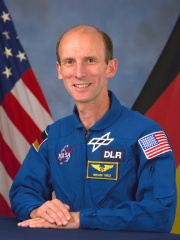
10. Gerhard Thiele (b. 1953)
With an HPI of 49.30, Gerhard Thiele is the 10th most famous German Astronaut. His biography has been translated into 17 different languages.
Gerhard Paul Julius Thiele (born September 2, 1953) is a German physicist and a former ESA astronaut. He is the father of Die Astronautin candidate Insa Thiele-Eich.
People
Pantheon has 13 people classified as German astronauts born between 1937 and 1983. Of these 13, 11 (84.62%) of them are still alive today. The most famous living German astronauts include Ulf Merbold, Hans Schlegel, and Thomas Reiter. The most famous deceased German astronauts include Sigmund Jähn, and Jean-Jacques Favier.
Living German Astronauts
Go to all RankingsUlf Merbold
1941 - Present
HPI: 59.86
Hans Schlegel
1951 - Present
HPI: 54.18
Thomas Reiter
1958 - Present
HPI: 54.18
Ernst Messerschmid
1945 - Present
HPI: 53.57
Klaus-Dietrich Flade
1952 - Present
HPI: 52.50
Ulrich Walter
1954 - Present
HPI: 50.04
Reinhold Ewald
1956 - Present
HPI: 49.83
Gerhard Thiele
1953 - Present
HPI: 49.30
Alexander Gerst
1976 - Present
HPI: 47.34
Matthias Maurer
1970 - Present
HPI: 46.32
Jasmin Moghbeli
1983 - Present
HPI: 45.37

